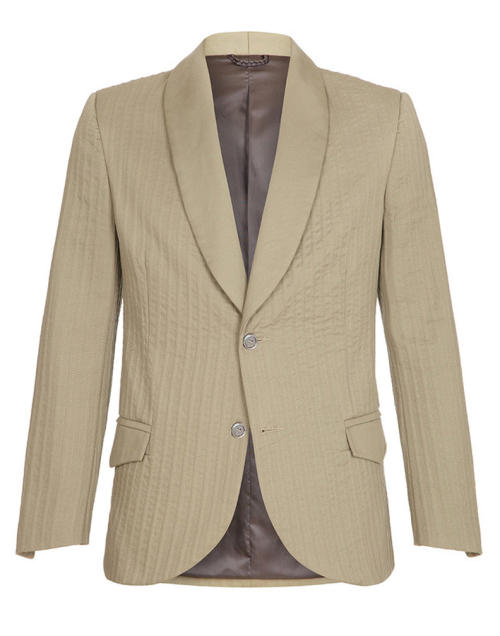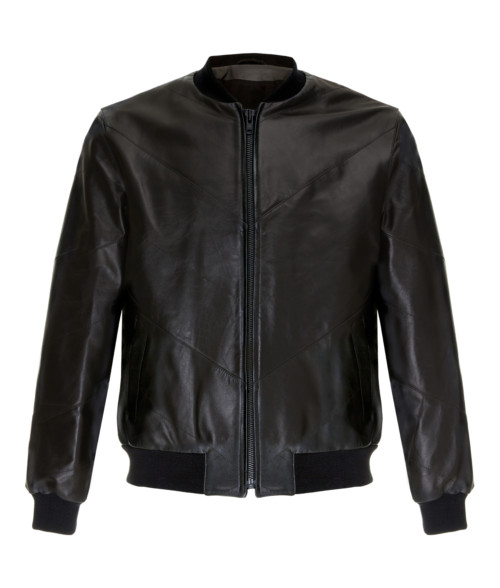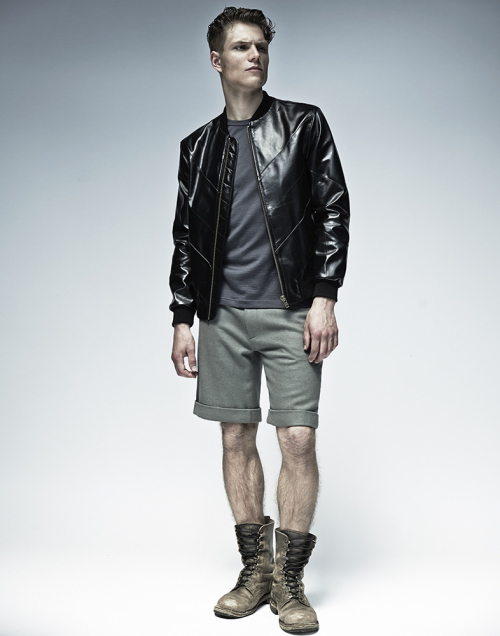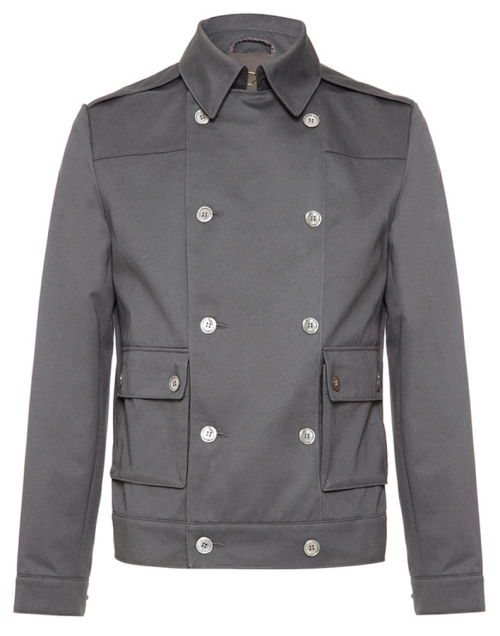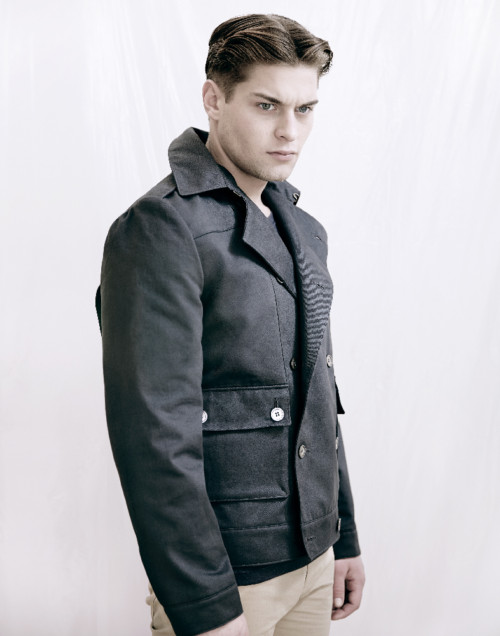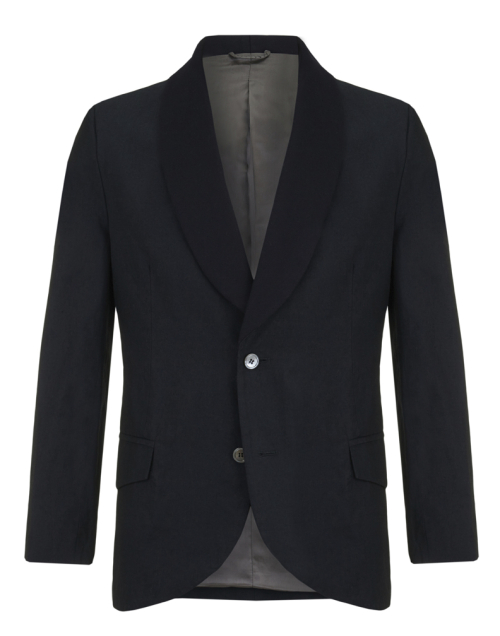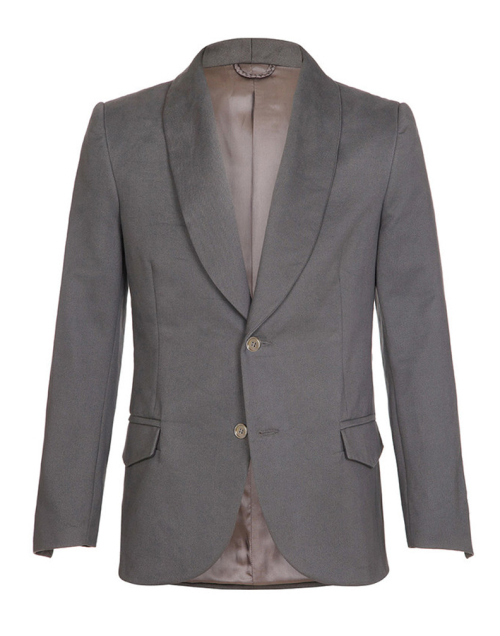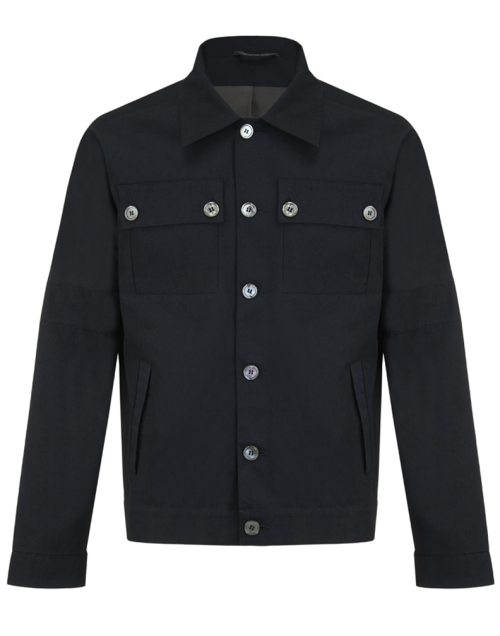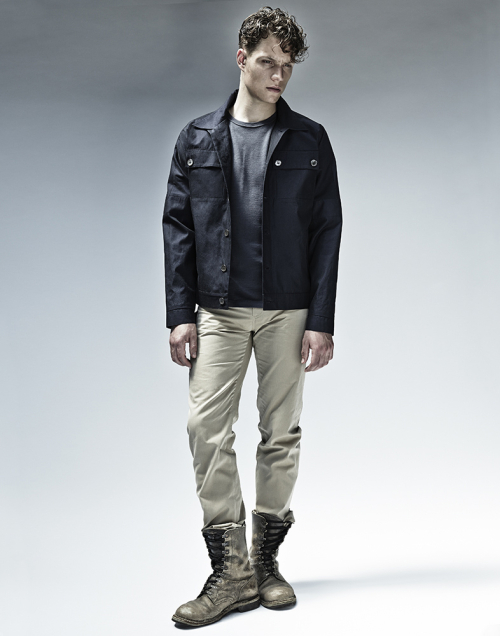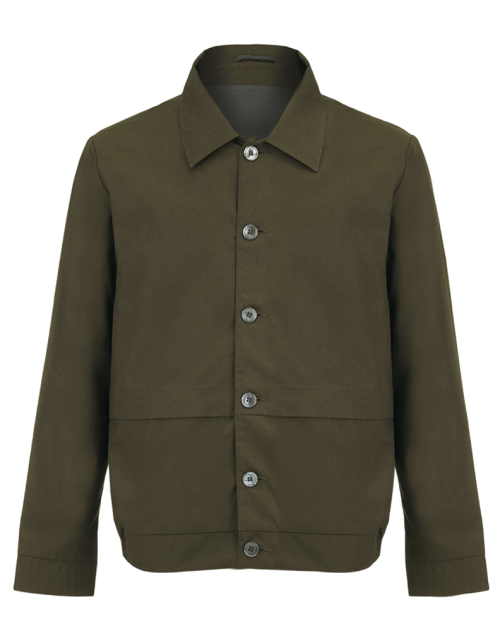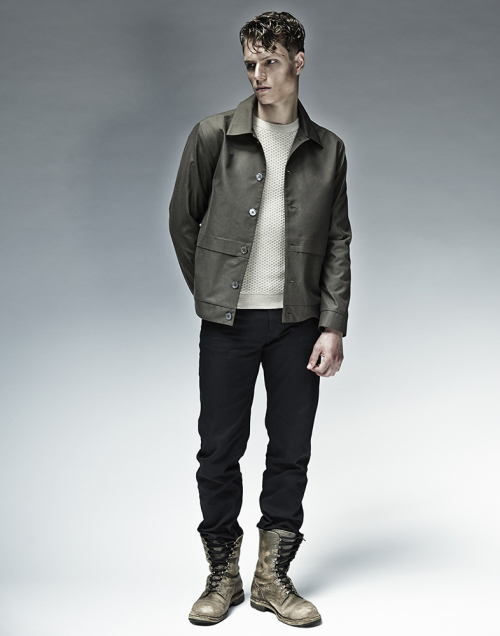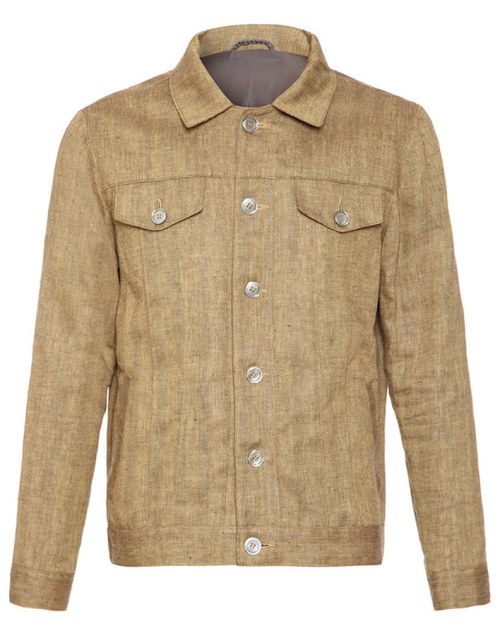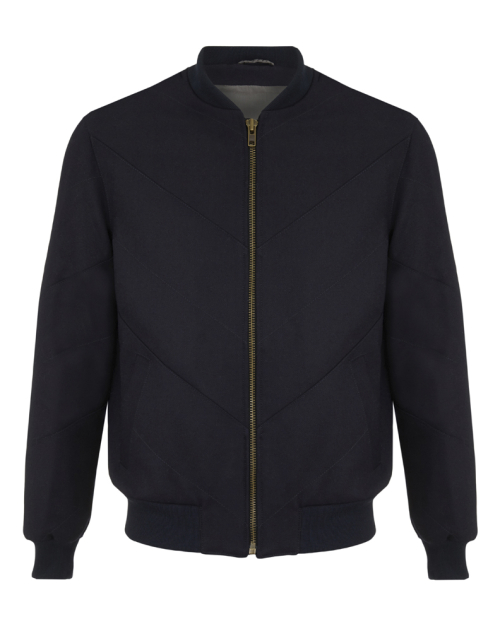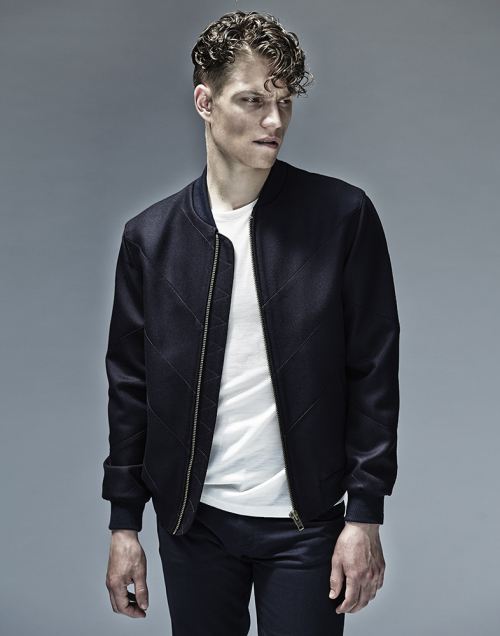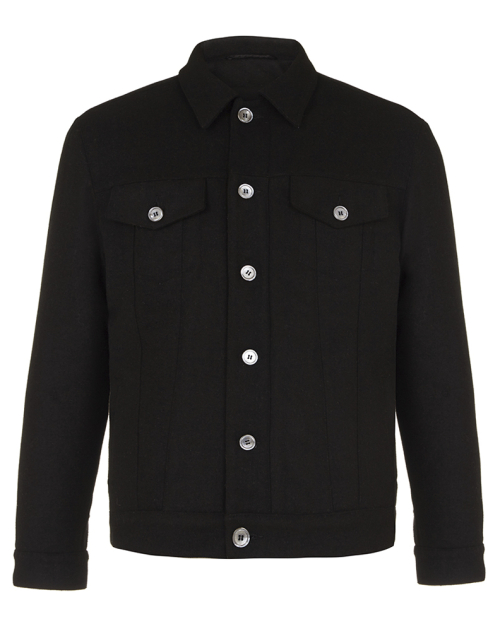The fabric used on this Caplin jacket is unique to Jenny Schwarz. The 100% stone green cotton comes to us as any other fabric would. Before cutting the true pattern pieces we quilt over-sized versions using an in-house technique. Once quilted, the true pattern is cut and assembled as usual.
The lining is a 50/50 viscose cupro twill; a high-quality and robust choice from Bernstein & Banleys, a British lining company founded in 1953.
We offset the quilted cotton with black lip mother of pearl buttons. Taken from the troca shell, these dark buttons occasionally catch the light and harmoniously reflect the cloth they sit on.
This Caplin jacket is a balancing act. We pick elements of formality from Dinner Jackets like the lack of vents and the shawl collar but construct them in unfamiliar cotton. Where wool would flow and drape with minimal creasing the cotton performs differently displaying its movement. As a counter balance the quilting gives a soft but rigid structure. The black lip mother of pearl buttons reflect the stone green of the cloth balancing a material often used in work wear.
